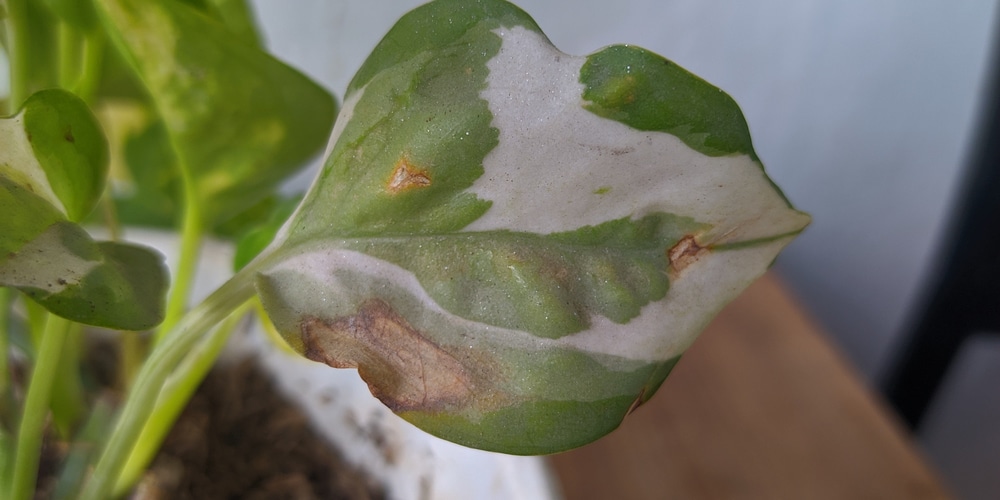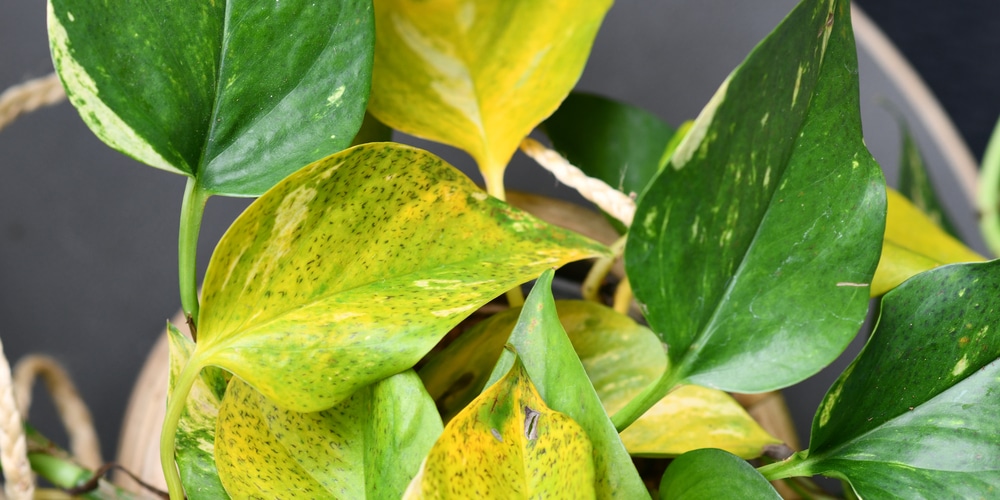A Pothos plant’s health is largely dictated by the luster, color, and robustness of its foliage. Whenever the leaves get droopy or turn yellow or brown, you can be certain that your pothos is under stress and needs help.
Here are five probable reasons why you’re seeing brown spots on pothos leaves.
Your Pothos Plant is Getting Burned by Direct Sunlight
The brown spots on your pothos leaves may be caused by the foliage making contact with direct sunlight. The plant actually does very well in bright and indirect light, but if for some reason it’s on a sunny window then you can expect sunburn and crispy brown spots on the leaves.
The solution for this is simple- move your pothos away from where it is and relocate to another space. Leaf scorch is irreversible but hopefully, you’d have learned not to expose your pothos to the sun’s rays.
Your Pothos is Overwatered
Overwatered plants usually exhibit signs such as yellowing leaves and brown spots. The more yellow foliage you see, the greater the extent of the damage.
Pothos plants generally do not need that much irrigation, especially if they’re situated indoors or as a houseplant. Aside from that, you’ll need to provide loose and well-draining soil within a container that lets excess water out so your plant won’t get waterlogged and develop root rot.
Most of the time your pothos will recover from overwatering the moment you correct the behavior.
Your Pothos is Infected by Bacteria or Disease
Leaf spots in shades of red, brown, or yellow are caused by bacteria and often start out in a single leaf. Over time, the disease will spread and your pothos’ foliage will drop one after another.
Bacterial leaf spot is a serious matter and should be treated the moment you spot the disease. You can try to contain the blight by cutting off the affected leaf, disposing of it properly, and placing your pothos in a room with good air circulation. Alternatively, you can bring it outside for a week and in a place that gets bright indirect light.
To prevent bacterial infections from happening again you’ll want to observe proper spacing among plants. Also, avoid overhead watering and making the leaves and soil overly wet from excessive irrigation.
Your Pothos is Over Fertilized
Having too much of one thing can lead to adverse effects, and the same rule applies to plants and fertilizers. While it’s true that plants need nutrients in the soil to grow quickly and thrive, too much of it can be fatal.
Brown spots on pothos leaves can be the result of fertilizer burn, or when there’s too much nitrogen in the soil. Pothos is not a heavy feeder and can usually grow well on its own without any commercial fertilizer application. Most of the time, your plant will be happy with organic material, compost, or any kind of leftover components in its growing medium.
You can minimize the risk of over-fertilization by following the manufacturer’s instructions (usually stated on the label). For pothos plants, a half dose of fertilizer given once during its growing season should be enough.
Your Pothos is Too Cold or Not in a Humid Environment
Last but not least, your pothos may show displeasure in its current environment with yellow or brown spots on its foliage.
You can tell whether it’s sunburn or frost burn by the texture of the brown spot. If it’s crispy and it’s summer, then it’s most likely caused by direct sunlight. However, if the leaf is soft and the brown spot is mushy, then it’s probably caused by low humidity levels or shock from the cold.

